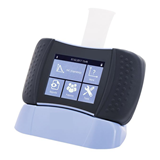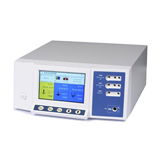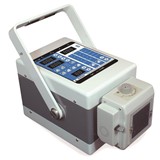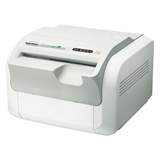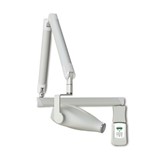Set up your veterinary practice right with our essential regulatory guide—includes AS/NZS 4815:2006, state registrations, and waste management laws.
Key takeaways
- Veterinary board registration: All new vet clinics must register with their relevant state or territory veterinary board before opening.
- Radiation licensing: X-ray equipment requires both a radiation management licence (for the practice) and a use licence (for individual practitioners).
- Fitout compliance standards: AS/NZS 4815:2006 and AS/NZS 4187:2014 govern infection control and sterilisation areas in veterinary environments.
- Zoning approvals: Councils must approve the intended use of premises as a veterinary clinic under local planning schemes.
- Waste management: Compliant disposal of sharps, biologicals and scheduled medications is mandatory under EPA and state-specific regulations.
- Building code compliance: Practices must meet the National Construction Code (NCC) for access, fire safety, and ventilation.
- Estimated timeline: Full regulatory approvals for a new practice typically take 8–16 weeks, depending on location and facility complexity.
Introduction
Launching a veterinary practice in Australia is more than just a fitout—it’s a process that requires rigorous compliance with local, state and national regulations. From radiation licensing to zoning approvals, failure to meet key requirements can delay your opening, invite fines, or void insurance.
This guide outlines the full regulatory checklist for veterinary clinic fitouts in Australia, with detailed advice on how to stay compliant from the ground up. Whether you’re building a general practice or a specialist clinic, this step-by-step guide will ensure your setup is safe, legal, and future-proof.
Veterinary board registration
Each Australian state and territory has its own veterinary practitioners board. Before operating, you must:
- Register the practice premises
- Ensure at least one principal veterinarian holds current registration in that jurisdiction
- Comply with minimum premises standards (some states conduct inspections)
State veterinary boards:
- NSW: Veterinary Practitioners Board of NSW
- VIC: Veterinary Practitioners Registration Board of Victoria
- QLD: Veterinary Surgeons Board of Queensland
- SA: Veterinary Surgeons Board of South Australia
- WA: Veterinary Surgeons' Board of Western Australia
- TAS: Veterinary Board of Tasmania
- ACT/NT: Register with local authorities
Radiation licensing for imaging rooms
If your clinic will use X-ray or CT imaging:
- Facility licence: Required for all locations housing radiation equipment
- Use licence: Each vet using radiation must have their own individual use licence
- Lead shielding & compliance testing: Must meet ARPANSA and state-specific shielding regulations
Licensing authorities by state:
- NSW: NSW EPA Radiation Control Branch
- VIC: Department of Health – Radiation Safety
- QLD: Radiation Health (Queensland Health)
- SA: Radiation Protection Branch (EPA SA)
- WA: Radiological Council of WA
- TAS: Department of Health Radiation Protection Unit
Tip: Include shielding design in architectural plans and have certified physicist sign-off.
Infection control and sterilisation standards
Veterinary clinics are held to high hygiene and disinfection standards to prevent cross-contamination. Your fitout must support:
- AS/NZS 4815:2006 – Office-based sterilisation, instrument reprocessing, surface hygiene
- AS/NZS 4187:2014 – Applies to higher-level disinfection areas in specialist or hospital-grade practices
Key fitout considerations:
- Clean-to-dirty workflows
- Separate reprocessing sinks
- Hands-free taps, sealed flooring
- Dedicated storage for sterile items
Building code and fire safety
Your veterinary premises must comply with the National Construction Code (NCC), including:
- Accessibility: Ramps, door widths, DDA-compliant bathrooms
- Egress: Minimum exit requirements and evacuation routes
- Fire safety: Fire extinguishers, fire-rated walls (especially near surgical or imaging rooms)
- Ventilation: Natural airflow or mechanical ventilation systems compliant with NCC Volume 1
Note: Always work with a certifier or building surveyor to ensure your design meets code before fitout.
Local council and zoning approvals
You’ll need a development application (DA) or complying development certificate (CDC) to convert a commercial or residential property into a vet clinic.
Considerations include:
- Noise management plan (e.g. barking dogs)
- Parking minimums for staff and clients
- Waste storage area requirements
- Operating hours
Some councils may request:
- Acoustic report
- Traffic study
- Landscaping plan
Pro tip: Check zoning regulations early. Some areas prohibit animal boarding or surgery without additional consents.
Waste disposal and environmental compliance
Veterinary clinics must manage various waste streams under both state environment laws and Commonwealth guidelines.
Main waste types:
- Sharps: Must be disposed of in AS-compliant sharps containers
- Pharmaceuticals (S8/S4 drugs): Logged and destroyed under supervision; stored in lockable cabinets
- Biological waste: Includes tissues, fluids; requires segregation and disposal via licensed providers
Applicable guidelines:
- State EPA acts (e.g. Environment Protection Act 2017 VIC)
- Department of Health's “Clinical and Related Waste” guidance
Workplace Health and Safety (WHS) protocols
All veterinary practices in Australia must comply with Workplace Health and Safety (WHS) legislation outlined by Safe Work Australia and enforced by state-specific regulators such as WorkSafe Victoria, NSW SafeWork, or WorkSafe Queensland.
To ensure your clinic operates safely and within legal obligations, you must implement the following:
- Develop a WHS management plan: Every veterinary clinic must maintain a site-specific WHS plan outlining hazard controls, incident reporting procedures, and staff responsibilities. This document should be updated regularly and easily accessible.
- Animal handling and sedation protocols: Staff must be trained in safe handling of small and large animals, with clearly defined procedures for using sedation and anaesthetic agents. Zoonotic disease control should be part of all staff inductions.
- PPE and training requirements: Clinics must provide appropriate personal protective equipment (PPE), including gloves, face masks, eye protection, and scrubs. Staff must also receive induction and annual refresher training in manual handling, infection control, and emergency procedures.
- Emergency and fire safety planning: You must have clear emergency evacuation maps, regularly tested fire detection systems, and fire extinguishers compliant with AS 2444. Fire drills should be conducted at least annually, and all staff trained in response protocols.
Failing to comply with WHS laws can result in significant fines, increased insurance premiums, or even closure. It’s essential to regularly audit your WHS systems and maintain training logs.
Radiation and imaging equipment compliance
If your veterinary practice includes diagnostic imaging services such as X-ray or fluoroscopy, you must meet strict radiation safety regulations under both federal and state law.
Here’s what you need to cover:
- Licensing and registration: All clinics operating X-ray machines must be licensed under federal guidelines via ARPANSA and comply with additional registration under their state authority—such as NSW EPA, Queensland Health Radiation Unit, or Radiation Protection Branch VIC.
- Shielding and fitout certification: Rooms housing imaging equipment must include certified lead-lined walls, floors, and doors, designed according to site-specific dose assessments. Shielding plans must be approved before construction and verified post-installation by a licensed radiation physicist.
- Calibration and inspection schedule: Imaging equipment must undergo regular inspection and calibration, usually annually, to ensure diagnostic quality and radiation safety. Maintenance records must be kept for audit purposes.
- Operator licensing and training: Any staff using X-ray equipment must hold a current radiation user licence, with scope of use relevant to veterinary imaging. This typically involves recognised training in radiation safety and machine-specific competencies.
Non-compliance with radiation regulations can attract severe penalties, including suspension of services. Consult with a licensed radiation consultant during your fitout planning stage to avoid costly reworks.
Business registration and insurance requirements
Before trading, ensure:
- ABN registration (via Australian Business Register)
- Business name registration (if trading under a name)
- Professional indemnity and public liability insurance
- Workers compensation policy (required once you hire staff)
- IT/data security plan if collecting and storing client records digitally (not mandatory but recommended under Privacy Act obligations)
Additional compliance considerations
- Noise limits: Comply with EPA and council guidelines on decibel levels during operating hours
- Chemical storage: Store cleaning and anaesthetic chemicals in ventilated cabinets, away from patient care areas
- Signage: External signage may require council approval, especially in heritage or residential zones
FAQs: Regulatory checklist for new veterinary practices
Do I need a licence to open a vet clinic in Australia?
Yes, you must register the clinic premises with the relevant state veterinary board and meet all associated health, zoning and safety regulations.
Can I use X-ray equipment in my clinic without a radiation licence?
No. You need both a radiation facility licence for the site and an individual use licence for each vet who operates the equipment.
Are infection control standards mandatory for small vet clinics?
Yes. AS/NZS 4815:2006 is the minimum standard required for all Australian clinics performing procedures or reprocessing instruments.
What if I rent a space—do I still need to meet building code?
Absolutely. Tenants are responsible for ensuring the interior fitout complies with NCC and local council regulations, even if the landlord owns the building.
How long does regulatory approval take?
Allow 2–4 weeks for council DA or CDC, and 6–12 weeks for radiation licensing and infection control approval (varies by state).
Final thoughts
Setting up a veterinary practice involves more than choosing paint colours and buying equipment. Australian clinics must meet stringent regulatory, safety and compliance standards to operate legally—and each element of your fitout must support that.
By following this regulatory checklist, you’ll ensure your veterinary clinic launch is smooth, fully approved, and safe for both patients and staff. Always consult with a specialist fitout company and local compliance consultant to streamline approvals and avoid costly oversights.



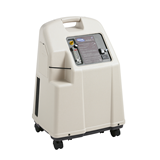
-160x160-state_article-rel-cat.png)


